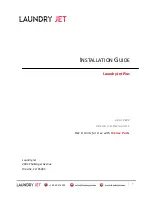
3
Ventilation
The use of a cooking appliance results in the
production of heat and moisture in the room
in which it is installed. Therefore, make sure
that the kitchen is well ventilated: keep natural
ventilation holes open or install a powered
cookerhood that vents outside. If you have
several hotplates/burners on, or use the cooker
for a long time, open a window or turn on an
extractor fan
Maintenance
•
It is recommended that this appliance is
serviced annually.
•
WARNING:
Before replacing the oven
lamp, turn off the power supply and make
sure that the oven is cool.
•
DO NOT
use cooking vessels on the
hotplate that overlap the edges.
•
Unless specified otherwise in this guide,
always allow the cooker to cool and then
switch it off at the mains before cleaning or
carrying out any maintenance work.
•
DO NOT
use the control knobs to
manoeuvre the cooker.
•
NEVER
operate the cooker with wet hands.
•
DO NOT
use a towel or other bulky cloth
in place of a glove – it might catch fire if
brought into contact with a hot surface.
•
DO NOT
use hotplate protectors, foil or
hotplate covers of any description. These
may affect the safe use of your hotplate
burners and are potentially hazardous to
health.
•
NEVER
heat unopened food containers.
Pressure build up may make the containers
burst and cause injury.
•
DO NOT
use unstable saucepans. Always
make sure that you position the handles
away from the edge of the hotplate.
•
NEVER
leave the hotplate unattended
at high heat settings. Pans boiling over
can cause smoking, and greasy spills may
catch on fire. Use a deep fat thermometer
whenever possible to prevent fat
overheating beyond the smoking point.
n
n
WARNING:
Unattended cooking on a
hob with fat or oil can be dangerous and
may result in fire.
n
n
NEVER
try to extinguish a fire with water,
but switch off the appliance and then cover
the flame e.g. with a lid or a fire blanket.
•
NEVER
leave a chip pan unattended.
Always heat fat slowly, and watch as it
heats. Deep fry pans should be only one
third full of fat.
•
WARNING:
Danger of fire: do not store
items on the cooking surfaces.
•
NEVER
try to move a pan of hot fat,
especially a deep fat fryer. Wait until the
fat is cool. Filling the pan too full of fat can
cause spill over when food is added. If you
use a combination of oils or fats in frying,
stir them together before heating, or as the
fats melt.
•
Foods for frying should be as dry as
possible. Frost on frozen foods or moisture
on fresh foods can cause hot fat to bubble
up and over the sides of the pan. Carefully
watch for spills or overheating of foods
when frying at high or medium high
temperatures.
•
DO NOT
use the top of the flue (the slot
along the back of the cooker) for warming
plates, dishes, drying tea towels or
softening butter.
•
DO NOT
use water on grease fires and
never pick up a flaming pan. Turn the
controls off and then smother a flaming
pan on a surface unit by covering the pan
completely with a well fitting lid or baking
tray. If available, use a multi-purpose dry
chemical or foam-type fire extinguisher.
Содержание Elise 110 Dual Fuel
Страница 1: ...USER GUIDE INSTALLATION INSTRUCTIONS Elise 110 Dual Fuel Australia U111114 01 ...
Страница 2: ......
Страница 4: ...ii ...
Страница 49: ...45 NOTE ...
Страница 50: ...46 NOTE ...
Страница 51: ...47 NOTE ...
Страница 52: ...Clarence Street Royal Leamington Spa Warwickshire CV31 2AD England www falconworld com ...








































